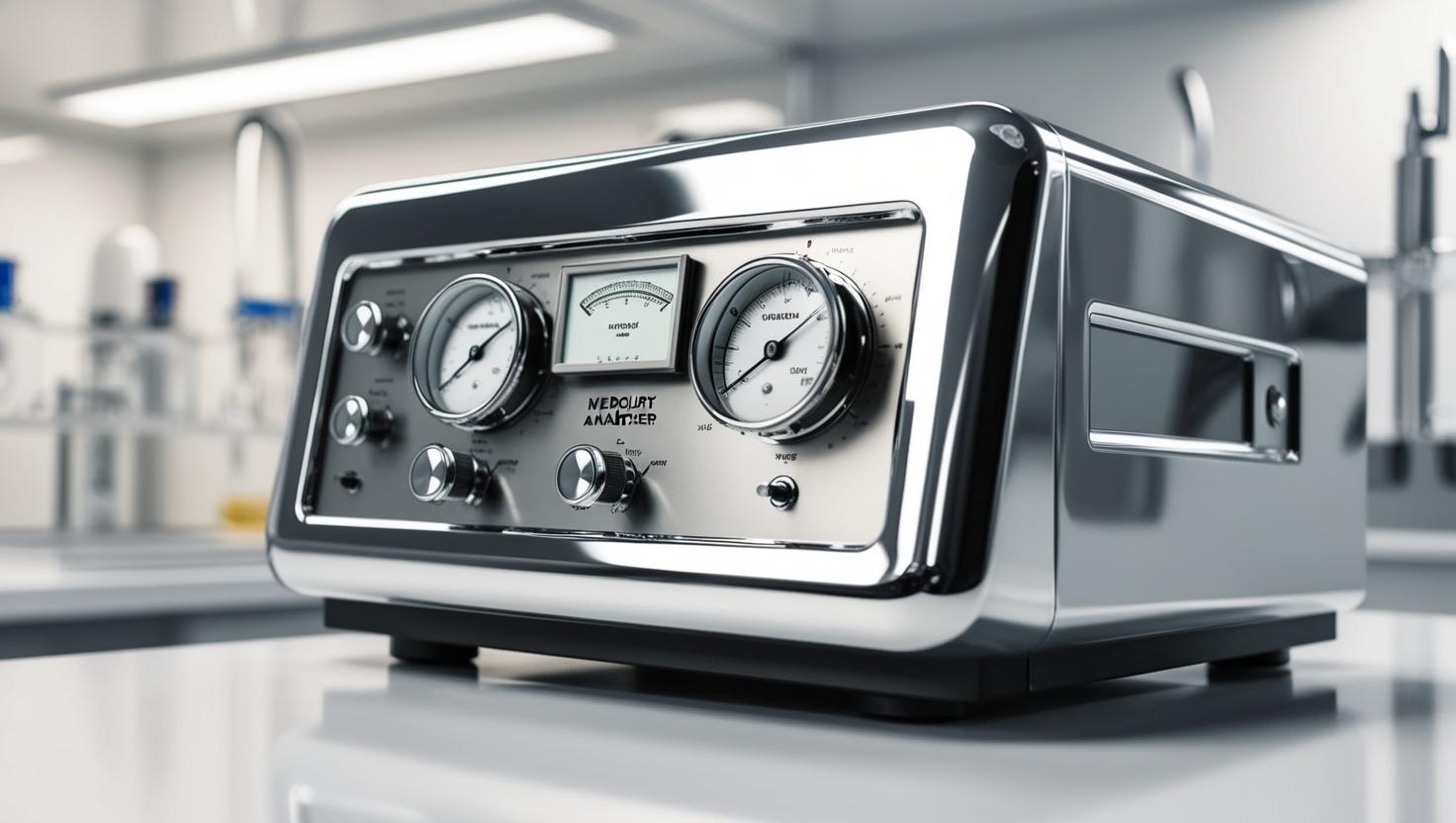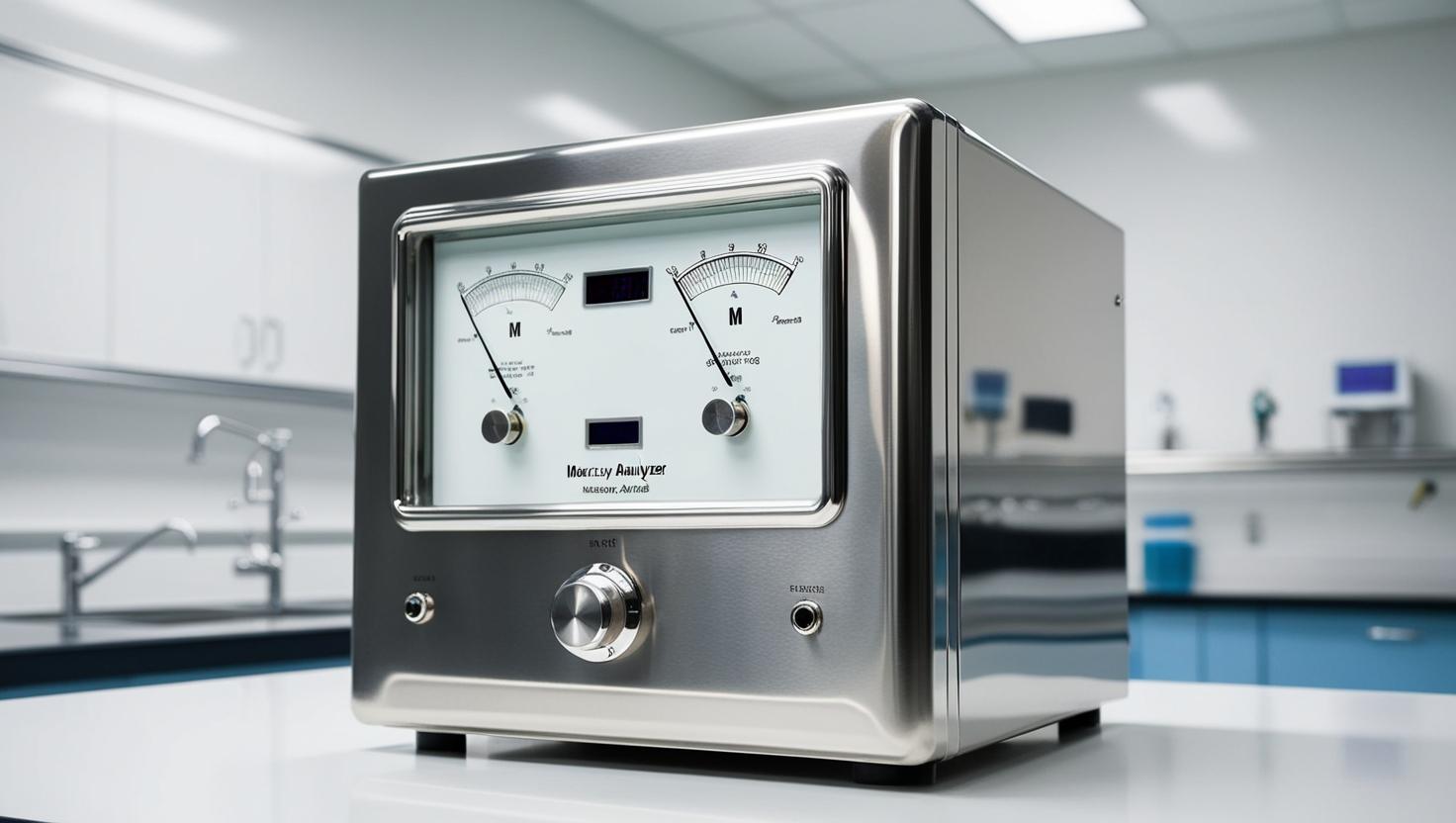The US Mercury Analyzers Market is experiencing a significant surge, driven by increasing environmental regulations, heightened awareness of mercury’s toxic effects, and advancements in analytical technologies. Mercury, a potent neurotoxin, poses severe risks to human health and ecosystems, necessitating precise monitoring and detection solutions. Mercury analyzers, sophisticated instruments designed to detect and quantify mercury levels in air, water, soil, and industrial samples, are becoming indispensable across various sectors.
The US Mercury Analyzers Market is shaped by a confluence of factors, including stringent regulatory frameworks like the Environmental Protection Agency’s (EPA) Clean Air Act and the Minamata Convention on Mercury. These regulations mandate continuous monitoring of mercury emissions, propelling demand for advanced analyzers. Additionally, the market is bolstered by growing industrial activities in sectors such as petrochemicals, mining, and food processing, where mercury contamination is a pressing concern. As the US continues to prioritize sustainability and environmental protection, the US Mercury Analyzers Market is set to play a pivotal role in ensuring compliance and safety.

Understanding the Core Dynamics of the US Mercury Analyzers Market
The US Mercury Analyzers Market encompasses a range of devices, including Cold Vapor Atomic Absorption (CVAA) and Cold Vapor Atomic Fluorescence (CVAF) analyzers, each tailored to specific applications. These instruments are designed to provide real-time, accurate, and sensitive detection of mercury levels, making them essential for environmental monitoring, industrial hygiene, and food safety. The market’s growth is underpinned by the increasing need for compliance with federal and state regulations, which require industries to monitor and report mercury emissions rigorously.
The US Mercury Analyzers Market is also influenced by technological advancements, such as the integration of real-time monitoring capabilities and portable analyzers. These innovations enhance the efficiency and accessibility of mercury detection, enabling industries to conduct on-site analysis and respond swiftly to contamination issues. As the market evolves, key players like Thermo Fisher Scientific, Lumex Instruments, and Tekran Instruments are investing heavily in research and development to introduce cutting-edge solutions that meet the diverse needs of end-users.
Key Drivers Fueling the Growth of the US Mercury Analyzers Market
Several factors are propelling the expansion of the US Mercury Analyzers Market, with regulatory compliance and environmental awareness at the forefront. The EPA’s Mercury and Air Toxics Standards (MATS) have been instrumental in driving demand for mercury analyzers, particularly in coal-fired power plants, which are significant contributors to mercury emissions.
The Minamata Convention, a global treaty aimed at reducing mercury emissions, has further amplified the need for advanced mercury analyzers in the US. This international agreement encourages industries to adopt robust monitoring systems to track mercury levels in air, water, and soil, ensuring compliance with environmental standards. The US Mercury Analyzers Market benefits from this regulatory push, as industries invest in high-precision instruments to avoid penalties and maintain operational efficiency.
Public health concerns also play a significant role in market growth. Mercury exposure is linked to neurological disorders and developmental issues, prompting increased scrutiny of mercury levels in food, particularly seafood. The food industry’s growing reliance on mercury analyzers to ensure product safety is a key driver of the US Mercury Analyzers Market. Additionally, the rise in industrial activities, such as mining and petrochemical processing, has heightened the demand for mercury detection solutions to mitigate occupational and environmental risks.
Technological advancements are another critical driver. The development of portable and automated mercury analyzers has expanded their application scope, making them accessible to a broader range of users, from field researchers to industrial operators. These devices offer enhanced accuracy, real-time data, and user-friendly interfaces, further boosting their adoption in the US Mercury Analyzers Market.
Major Applications Driving Demand in the US Mercury Analyzers Market
The US Mercury Analyzers Market is characterized by its diverse applications across multiple industries, each contributing to the market’s growth. Environmental monitoring is the largest end-use segment, driven by the need to comply with stringent regulations and protect ecosystems from mercury pollution. Mercury analyzers are used to test water, soil, and air quality, ensuring that mercury levels remain within safe limits. The EPA and state environmental agencies rely on these instruments to enforce compliance and monitor industrial emissions.
The food industry is another significant application area for the US Mercury Analyzers Market. Mercury bioaccumulation in fish and shellfish poses a risk to consumers, necessitating rigorous testing to ensure food safety. The food sector accounted for a 40% market share in 2023, with demand expected to grow at a rapid pace due to increasing consumer awareness and globalization of the food supply chain. Mercury analyzers help food processors and regulators maintain high safety standards, particularly for seafood exports.
The oil, gas, and petrochemical industries also contribute to the US Mercury Analyzers Market. Mercury detection in natural gas, liquids, and solids is critical to preventing equipment corrosion and ensuring worker safety. These industries use mercury analyzers for real-time monitoring and emergency response, such as detecting mercury spills in refineries. The healthcare industry, though a smaller segment, is emerging as a growth area, with mercury analyzers used to test biological samples like urine and blood for mercury exposure.
Regional Insights: Why the US Leads the Global Mercury Analyzers Market
The Northeast and Midwest regions of the US are key hubs for the US Mercury Analyzers Market, driven by their concentration of industrial facilities and environmental research institutions. States like California and New York, with their progressive environmental policies, are also significant contributors to market growth. The Southeast, with its growing petrochemical industry, is emerging as a fast-growing region for mercury analyzer adoption.
The US Mercury Analyzers Market benefits from substantial investments in research and development, supported by both government and private sectors. Collaborations between universities, research institutes, and manufacturers are driving innovation in mercury detection technologies, further solidifying the US’s position as a market leader. The country’s commitment to the Minamata Convention and other international agreements also enhances its role in shaping global mercury monitoring standards.
Competitive Landscape of the US Mercury Analyzers Market
The US Mercury Analyzers Market is highly competitive, with key players focusing on innovation, strategic partnerships, and market expansion. Leading companies include Thermo Fisher Scientific, Lumex Instruments, Tekran Instruments, PerkinElmer, and Analytik Jena, each offering a diverse portfolio of mercury analyzers tailored to specific applications. These companies are investing in research and development to introduce advanced features like automation, portability, and enhanced connectivity.
Thermo Fisher Scientific, a market leader, offers a range of CVAA and CVAF analyzers known for their reliability and precision. Lumex Instruments has gained traction with its portable analyzers, such as the Light 915M2, which cater to field-based applications. Tekran Instruments specializes in environmental monitoring solutions, providing analyzers that meet EPA standards for mercury emissions testing. The US Mercury Analyzers Market is also seeing increased competition from smaller players and startups, which are introducing cost-effective and user-friendly solutions.
Strategic collaborations and acquisitions are common in the US Mercury Analyzers Market. For example, partnerships between manufacturers and environmental agencies facilitate the development of customized solutions for regulatory compliance. Mergers and acquisitions allow companies to expand their product portfolios and geographic reach, strengthening their market presence.

Challenges Facing the US Mercury Analyzers Market
Despite its growth potential, the US Mercury Analyzers Market faces several challenges that could impact its trajectory. High equipment costs remain a significant barrier, particularly for small and medium-sized enterprises (SMEs) and research institutions with limited budgets. Advanced mercury analyzers, especially automated and portable models, require substantial investment, which may deter adoption in cost-sensitive markets.
Technical complexities also pose a challenge. Operating sophisticated mercury analyzers requires specialized training, and a lack of skilled personnel can hinder effective implementation. The US Mercury Analyzers Market must address this issue through comprehensive training programs and user-friendly interfaces to broaden its user base.
Evolving regulatory landscapes present another challenge. As environmental standards become more stringent, manufacturers must continuously update their products to meet new requirements, increasing production costs. The US Mercury Analyzers Market is also impacted by competition from alternative monitoring technologies, which could disrupt demand for traditional mercury analyzers.
Download PDF Brochure for More @ https://www.marketsandmarkets.com/pdfdownloadNew.asp?id=1667584
Future Outlook for the US Mercury Analyzers Market
The future of the US Mercury Analyzers Market is promising, with sustained growth expected through 2031. The market is projected to benefit from ongoing regulatory pressures, technological advancements, and increasing awareness of mercury’s health and environmental impacts. The adoption of automated and portable analyzers is expected to accelerate, driven by the need for rapid, on-site analysis in diverse applications.
Emerging technologies, such as sensor-based detection and cloud-compatible systems, are likely to shape the next generation of mercury analyzers. These innovations will enhance data management, improve accuracy, and reduce operational costs, making mercury analyzers more accessible to a wider range of users. The US Mercury Analyzers Market is also expected to see increased demand in emerging sectors like biotechnology, where mercury testing in biological samples is gaining importance.
Government initiatives and international collaborations will continue to drive market growth. The US’s commitment to the Minamata Convention and other environmental agreements will spur investments in mercury monitoring infrastructure, creating opportunities for manufacturers and service providers. The US Mercury Analyzers Market is poised to maintain its global leadership, supported by its robust ecosystem of innovation, regulation, and industry demand.
